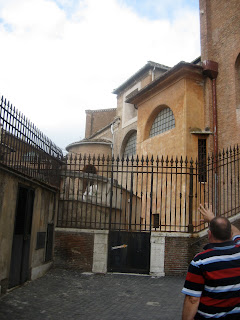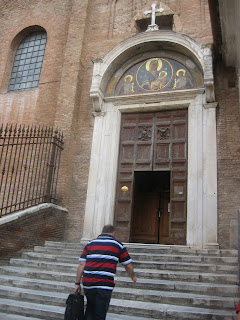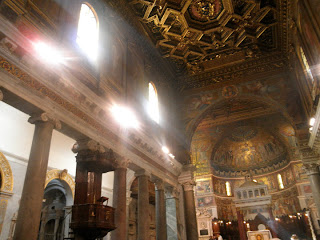I knew I’d be doing a lot of walking when I came to Rome but somehow I didn’t understand that a lot is A LOT, especially when you don’t look at maps enough (or at all). Our weekend adventure this time was a daytrip to a 15th century amusement garden, called Parco di Mostri or Sacro Bosco (sacred woods). The garden is near a town called Attrigliano, near Vitrebo, just an hour train ride from Roma. The gardens were owned by Duke Orsini and according to our map: “were for the entertainment of knighs and ladies”, (I’m sure they met knights).
Since we wanted to get an early start, we planned on arriving in Attrigliano at 11:30, which we did. However, we forgot to factor in the 7 kilometer hike up a mountain on a highway. Once again, the locals laughed at us (this seems to be a recurring theme). To be fair to us, we did know there was a bit of a walk, we just didn’t realize it would be a half-marathon round trip!
The hike was definitely scenic though, and we walked by some vineyards and even picked a few grapes on the side of the road. We also sang a lot.
When we got to Sacro Bosco, there was no question of whether we would enjoy ourselves—we had walked to far not too! Sooo, enjoy the gallery of goofy pictures we had to take to make our journey worth it!























